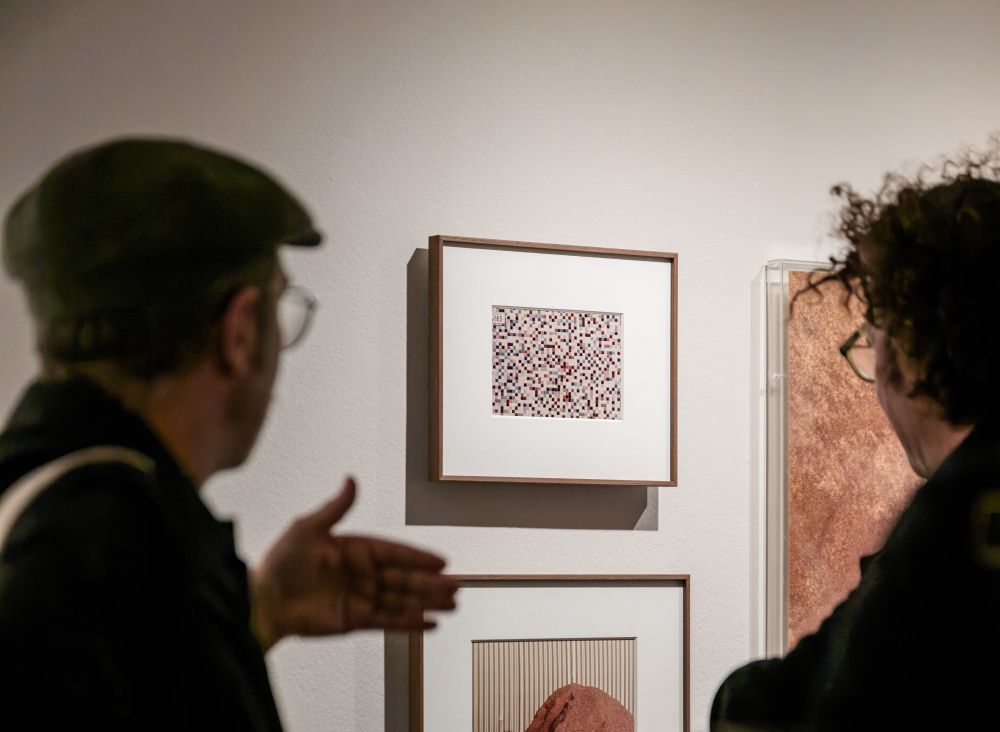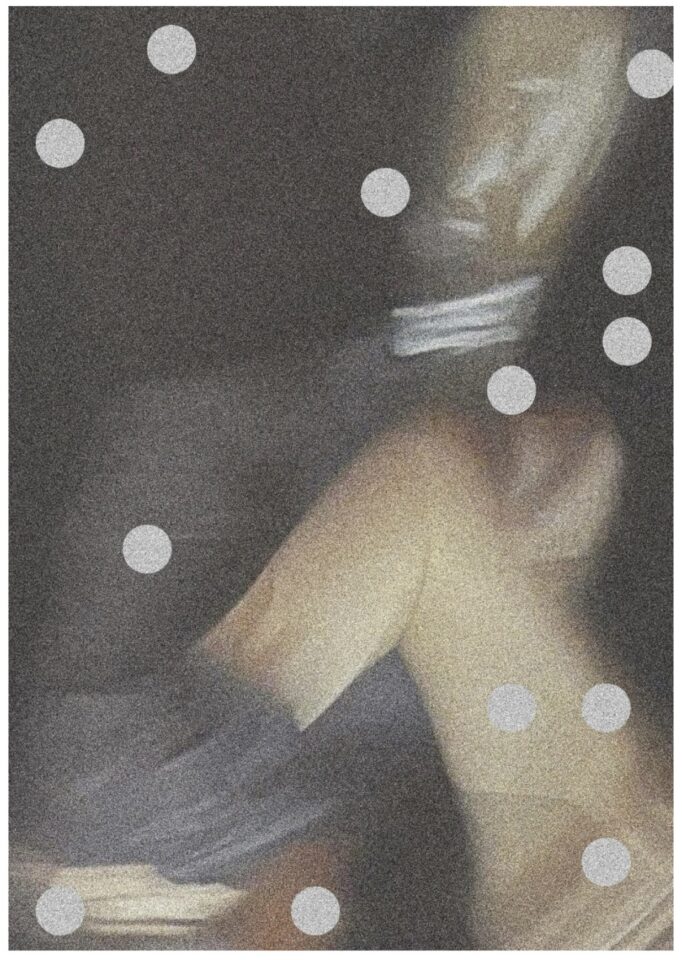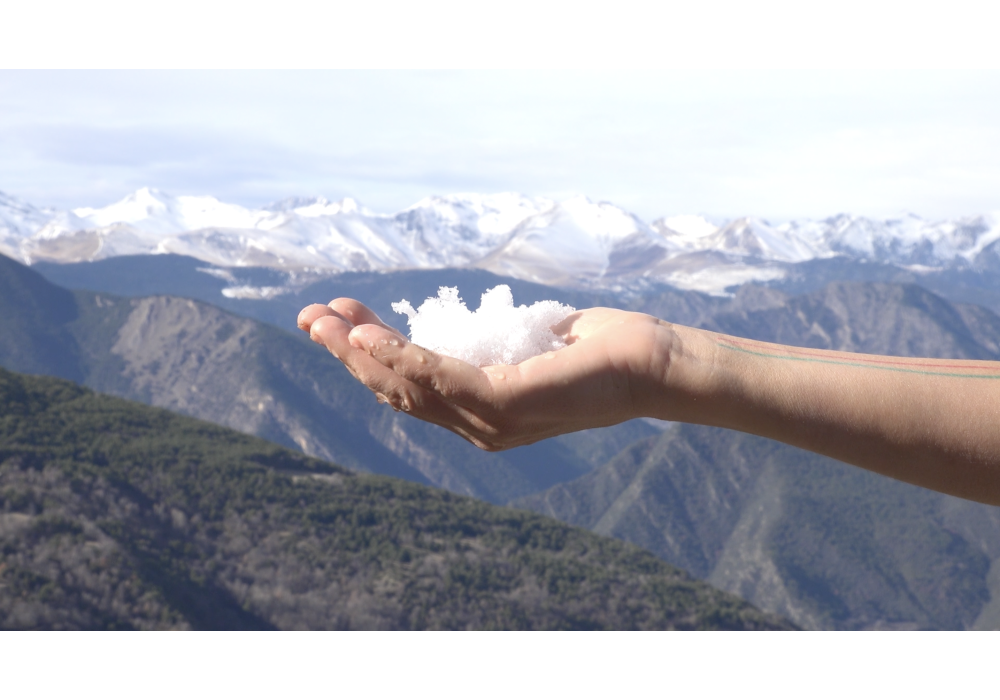Raw dreams - Alina Melnikova
Raw dreams – Alina Melnikova –
Opening March 13th 2025 – 7 pm
From March 13th 2024 to Apr 7th 2025
Amb el suport de l’Institut de Cultura de Barcelona
What is a landscape?
A place? A view? An image? A hallucination?
They say landscape exists only under the gaze of the modern human: one who, emerging from the industrialized city, longs to escape it, drawn by a nostalgic yearning for an unattainable, original nature. Since the seventeenth century, notions of separation, loss, alienation, and dispersion have been inseparable from the feeling of nostalgia. An awareness of an irreversible fracture between humans and the world, between the self and nature. This sentiment permeates philosophy, literature, poetry in Romanticism, and, of course, landscape painting, too. In this sense, the depiction of landscape became one of the aesthetic embodiments of nostalgia. Nostalgia reaches toward the past and memory, or rather, a disorder of memory: an excess of longing for lost time, a resistance to accepting the irreversible nature of time; it is also tied to displacement and the loss of reference points, a longing for a homeland – a mal du pays.
The latest paintings by Alina Melikova seem to both engage with, and question, that melancholy, that poignant sense of separation.
In Raw Dreams, Melikova constructs her images with oil brushstrokes that mimic the immediacy of a marker’s trace: a continuous, precise, and uniform line, almost impossible to blur, reminiscent of her works on paper where markers and airbrushes create clean, direct lines and forms. On these canvas, the appearance of a continuous trace arises from the meticulous application of oil paint: the texture is not defined by gradients or shifts in color intensity but through the careful juxtaposition of tones, through brushstrokes that strive to remain separate, avoiding any merging.
Melikova’s painterly gesture plays with this technical trick, perhaps challenging, with a nod to the instinctive spontaneity of naive mark-making, the solemnity of traditional landscape painting. She creates scenes that oscillate between the figurative and the abstract, where the image doesn’t offer itself as representation but as suggestion, like the faint echo of a barely remembered dream, just as the series title suggests.
In her large canvases, which set the prevailing tone of this body of work, dense and tangled vegetal and atmospheric forms stretch across the entire surface. Landscapes, perhaps, of memories recalled, imagined, dreamt, hallucinated. A forest, a sky, a storm. Creatures timidly suggested among the foliage: the curve of a scaly tail that could belong to a serpent or a mermaid, elongated fingers discreetly emerging from behind the leaves, animal shadows dissolving into the undergrowth. A palette of greens dominates: greens that refuse to mimic the benevolent enchantment of nature. These are synthetic greens, intense and artificial, disconnected from any notion of a lost paradise. Yet, this artificial, industrial green is charged with an intense emotionality. It defines atmospheres laden with anguish, desire, hope, or fear. A territory crafted by imagination, rooted in memory and reverie, but with a concrete materiality. This isn’t a landscape of refuge but an artifice that sketches a scene of strangeness and unease – like the tense moment before a storm.
In contrast, Melikova’s portraits introduce a space of calm and restraint. Shy, veiled faces seek refuge from the gaze behind a flower or stare inexorably into nothingness, projecting themselves beyond the canvas.
Pale, freckled skins are marked by soft, pastel tones: diluted browns, greens, beiges, pinks, and reds tracing the lines of the face, hinting at emotions and expressions. They carry an almost childlike purity.
The freckles on the skin form a delicate, painterly pointillism. An irregular pattern, without apparent order or reason, that in some moments expands to cover entire faces. These portraits are landscapes, too. Landscapes of intimacy, of fragility and containment. Set against the restlessness of nature, they seem to be its counterpoint: the vulnerable, silent part of a world that enfolds them.
In one final painting, a human figure appears in an urban scene. A sequined dress glimmers, illuminating a body captured in a seated pose. Darkness suggests a nocturnal setting. Perhaps on a bus or at a metro stop. The image hints at how Melikova’s practice is rooted in her observation of Barcelona’s urban environment, a space and time where vegetation is often absent, evoked only in the decorative motifs of buildings and the carved patterns along city streets. Melikova’s landscapes are not nostalgic images meant for contemplation. Rather, they are textures to be inhabited, first through the gaze, but also with the rest of the senses. Her materiality isn’t ethereal but synthetic, yet infused with poetry. Her work resists a Cartesian divide between humanity and nature. Instead, her paintings create a universe where nature is itself an artifice, a trap, a metaphor, a delirious desire. What is a landscape? Perhaps it is this. A near-hallucination.Something emerging from an altered state of consciousness. An environment where everything seems at once blurred and tangible, suspended and immortalized, yet constantly shifting. Something is about to happen, though this suspended time could be eternal too.
Mariella Franzoni text
Alina Melnikova (Vilnius 1983) lives and works in Barcelona. She has exhibited her works extensively across Europe since graduating from the Vilnius Academy of Arts in 2008. Her preferred medium is painting, which allows her to play with the seriousness and traditional views often attributed to figurative oil painting.
In her latest works, Melnikova explores the relationship between naturality and artificiality and its sociocultural reflections.
In 2009, she won the Award for Young Painters in Lithuania. In 2013, she was invited to the international artist residency “La Cité Internationale des Arts” in Paris. Her work has been exhibited in internationally significant art institutions, including the Contemporary Art Center of Tallinn (Estonia), Vilnius (Lithuania), and Krakow (Poland). Alina’s work is part of contemporary art collections such as the Dietrich Mateschitz (Red Bull Collection), Lewben Art Foundation, MO Museum, and SEB Bank. In 2022, her work was included in the book Lithuanian Women Artists: Women Artists in the Visual Arts from the Beginning of the 20th Century to the Present Day by A. Narušytė. She has an upcoming exhibition at the National Lithuanian Art Museum, V. Kasiulis branch, in November 2025.




